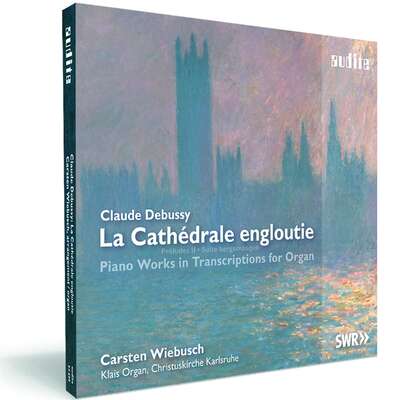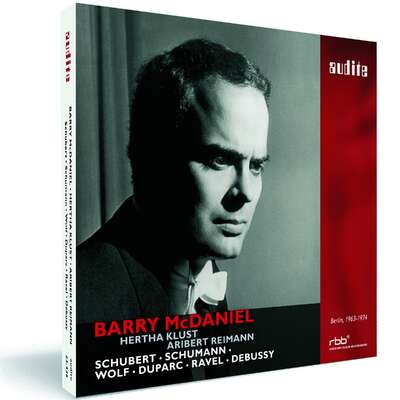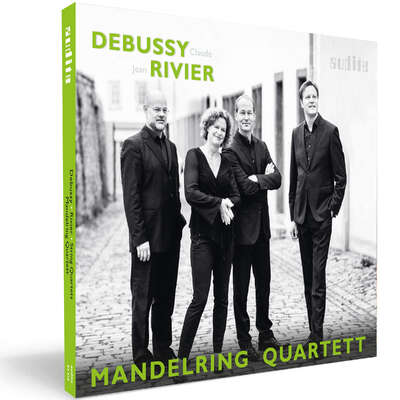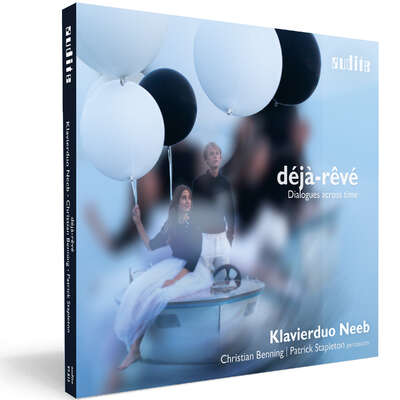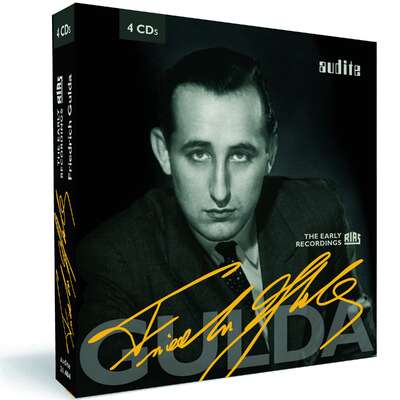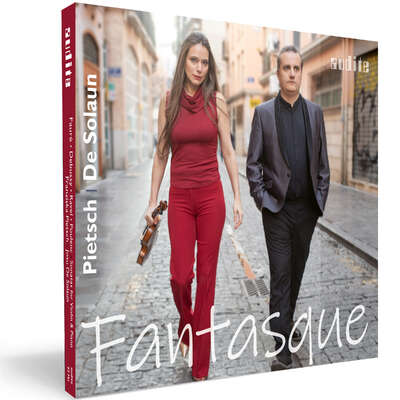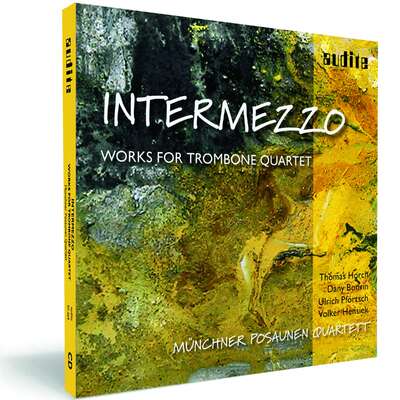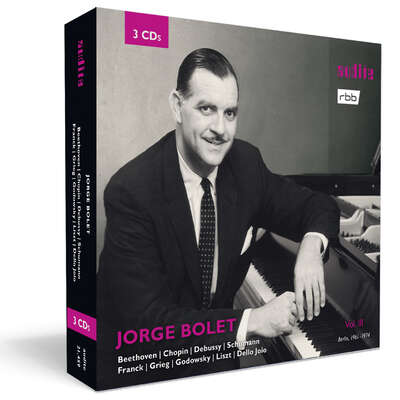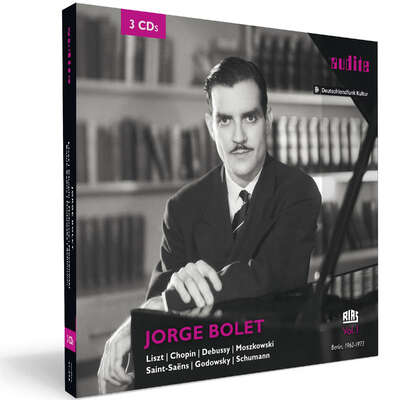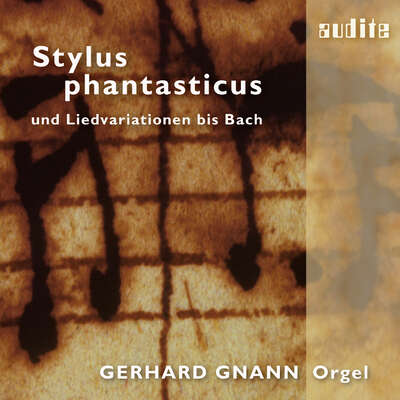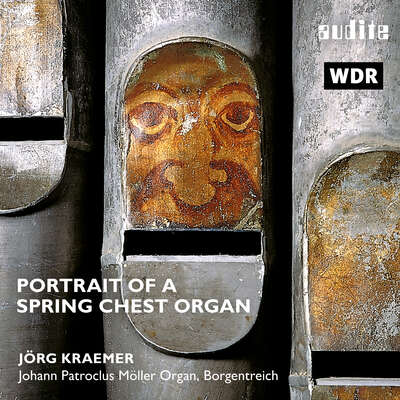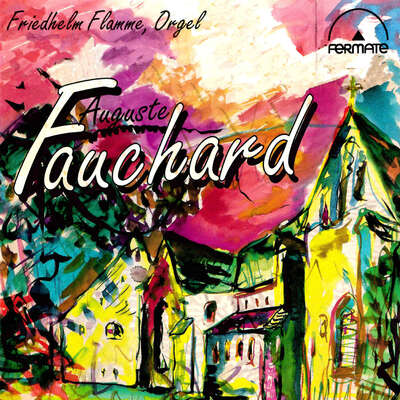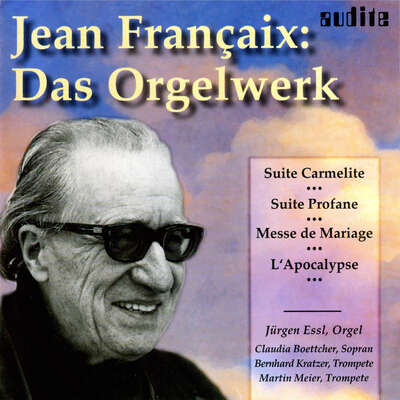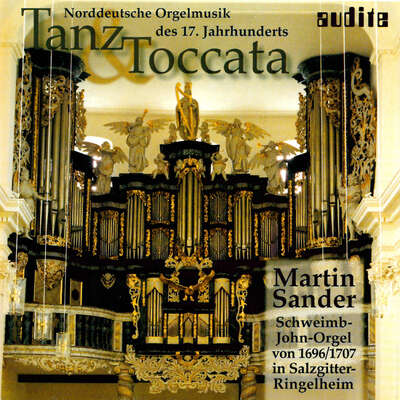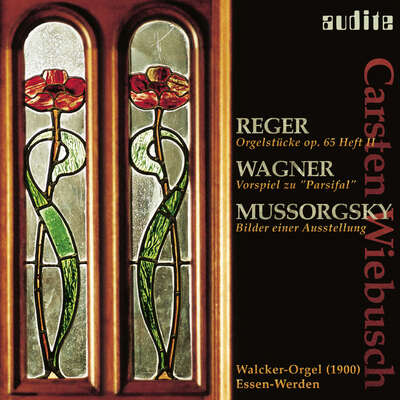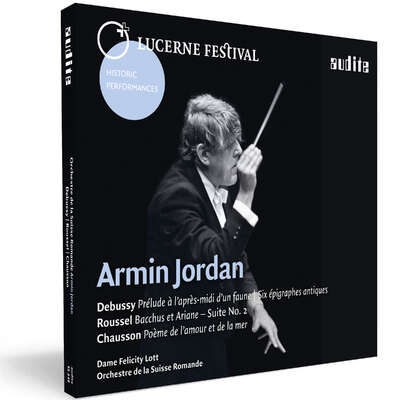
Debussy changes music history with his compositions. In his Préludes of 1912, he looks far ahead and, against the background of actual images, writes in such an abstract and visionary manner that his works reveal their harmonic modernity in an abundance of colours. Played on the organ, Debussy’s works run seamlessly into the soundscapes of Olivier Messiaen. Such a colourful interpretation of his piano works on the organ corresponds to Debussy’s maxim “You only need to listen. Pleasure is the law”.more
Debussy changes music history with his compositions. In his Préludes of 1912, he looks far ahead and, against the background of actual images, writes in such an abstract and visionary manner that his works reveal their harmonic modernity in an abundance of colours. Played on the organ, Debussy’s works run seamlessly into the soundscapes of Olivier Messiaen. Such a colourful interpretation of his piano works on the organ corresponds to Debussy’s maxim “You only need to listen. Pleasure is the law”.
Track List
This bonus track is only available as a download!
Details
|
Claude Debussy: La Cathédrale engloutie
Piano Works in Transcriptions for Organ |
|
| article number: | 97.699 |
|---|---|
| EAN barcode: | 4022143976994 |
| price group: | BCA |
| release date: | 22. November 2013 |
| total time: | 86 min. |
Informationen
At a first glance, it is an unusual project to play Debussy's piano works on the organ. At a second glance, however, it is a sensation: Carsten Wiebusch's CD La Cathédrale engloutie - piano works in transcriptions for organ sparks off a riot of colours, using the entire palette of reed stops, the most diverse flues, entirely neutral accompanying registers through to glockenspiel. Wiebusch captures the expression of Debussy's harmonic language by sustaining sounds at the organ, which, at the piano, would die away relatively quickly. The second book of Préludes and the Suite bergamasque, two standard works of piano repertoire, are interpreted by Wiebusch on the organ, revealing how abstract Debussy's thinking is in this music. "When I play Debussy", Wiebusch explains, "it seems no longer like a transcription, but rather an assembly on the organ, and then the music develops a truly extraordinary harmonic and atmospheric power." A power which genuinely opens up a whole new world. "You only need to listen. Pleasure is the law", according to Debussy, who created works which conquer an academic conformism, dissolving rigid structures and remain almost weightless. Nobody else had such a great gift for mixing colours and at the same time leaving them their freedom and also their certainty. Such a colourful interpretation of his piano works on the organ corresponds to Debussy's maxim, according to which pleasure in sound is law. Carsten Wiebusch studied church music in Düsseldorf. As organist, he won prizes at international organ competitions, including in 1995 at the August Gottfried Ritter Wettbewerb in Magdeburg and at the Johann Sebastian Bach Preis Wiesbaden. He holds an organ class at the Karlsruhe Musikhochschule. Since 1999 he has been organist and choir master at the Christuskirche in Karlsruhe, whose Klais organ, inaugurated in 2010, possesses an equally powerful and poetic sound which is also portrayed on the SACD "Best's Bach" (aud. 92.663).
Reviews
The Organ | No. 368 Summer 2014 | Curtis Rogers | May 1, 2014
Seeing as Debussy's Piano Preludes have been orchestrated (most notably by Colin Matthews) it was by no means a fanciful project for Carsten WiebuschMehr lesen
To some extent, any shortcomings are beyond Wiebusch's control, attributable simply to the very nature of the organ. On the one hand it does not have the fixed, percussive tones of the piano, which means that the fairies of Les Fées sont d'exquises danseuses do not quite flit around as spryly as they might (and although it is rhythmically nimble, the registration could utilise a few more mixtures or mutations to create a more sparkling sonority); nor do the bell-like chords of La Cathedrale come over with the increasing clarity that they might. On the other hand, the effect of the organ's sustained sounds – however quiet – is not the same as the vibrations of pedalled chords, and so Brouillards sounds merely mushy rather than mysteriously nebulous (nor is it clear why Wiebusch draws the detached staccato quavers in the treble register during the section marked 'un peu retenue' into a legato line near the end of this Prelude).
Wiebusch plays the 2010 Klais organ of the Christuskirche in Karlsruhe (an instrument rebuilt from an older organ by the same firm). The church acoustic provides an ideal sonic atmosphere in holding phrases together which, on paper, appear disjointed, for example in Ondine. Wiebusch also uses the Swell shutters astutely to draw a contrast between those passages marked by Debussy 'en dehors' and those which are more prominent in volume. He also creates some beautifully sombre registrations, with just a touch of reediness, for Feuilles mortes, Bruyeres and Canope. Vivid timbres are used in Feux d'Artifice though its climax is a damp squib, consisting simply of spread chords rather than the heaving pairs of chords Debussy notates. Paradoxically, it is perhaps the technical study Les tierces alternées whose registration sounds most authentically 'French', and elsewhere, a more vibrant use of colours would have been welcome. Wiesbusch plays the Suite with rhythmic flexibility, but I might have been inclined to use a more shimmering string sonority for the lustre of Clair de Lune.
Sadly the CD notes do not explain the specific principles which guided Wiebusch in making his transcriptions, nor do they provide a breakdown of registrations.
hifi & records | 2/2014 | Uwe Steiner | April 1, 2014
Die pianistisch präzisen Zeichnungen dieser stimmungshaft diffusen, thematisch abstrahierenden, harmonisch irrlichternden Gebilde verwandelt er in koloristisch eindringliche Malerei. Zur überwältigenden Wirkung trägt auch die phänomenale Aufnahmetechnik bei, die Orgel und Kirchenraum ebenso haptisch wie atmosphärisch abbildet. Mehr lesen
Classical CD Choice | March 2, 2014 | Barry Forshaw | March 2, 2014 | source: http://www.cdcho... Delius, Prokofiev and a Month of Rarities from Naxos and Helios
Carsten Wiebusch’s CD ‘La Cathédrale engloutie’ [...] is highly impressive, utilising the instrument to find a persuasive equivalent for Debussy’s harmonic language.Mehr lesen
http://theclassicalreviewer.blogspot.de | Friday, 7 February 2014 | February 7, 2014 Carsten Wiebusch draws some beautiful colours and textures from the Klais organ of Christuskirche, Karlsruhe in his own transcriptions of piano works by Debussy on a new release from Audite
This may not be what Debussy would have expected but I can’t think of an organ disc I have enjoyed so much for a long time. The recording is superb, one of the best organ recordings I have heard.Mehr lesen
Organ | 01/2014 | Michael Gerhard Kaufmann | January 1, 2014
In den 77 Minuten Spielzeit bleiben am Ende wenig Wünsche offen, weder an das Instrument noch an den Interpreten: Beide zeigen sich wandlungsfähig-vielgestaltig und dienen im besten Sinne der Musik. Mehr lesen
www.landgoedgerianna.nl | December 2013 | Jan-Willem van Braak | December 1, 2013
Opvallend is dat Wiebusch een opmerkelijk stukje affiniteit voor deze muziek bloot legt. Tempo, timbre, kleur en registraties, het klopt allemaal. Melancholie maar ook hilariteit en bitsheid wisselen zich continue en in rap tempo af. Wiebusch zorgt dat deze eclatante muziek niet onopgemerkt aan je voorbij gaat. Hulde!Mehr lesen
Badische Zeitung | Samstag, 30. November 2013 | November 30, 2013 REGIO-CD: Debussy in Karlsruhe
Als Orgelkomponist ist Claude Debussy bislang nicht hervorgetreten. Das könnte sich ändern. Denn: Carsten Wiebusch hat Klavierwerke diesesMehr lesen
Badische Zeitung | J.A. | October 24, 2013 Debussy in Karlsruhe
Als Orgelkomponist ist Claude Debussy bislang nicht hervorgetreten. Das könnte sich ändern. Denn: Carsten Wiebusch hat Klavierwerke diesesMehr lesen

